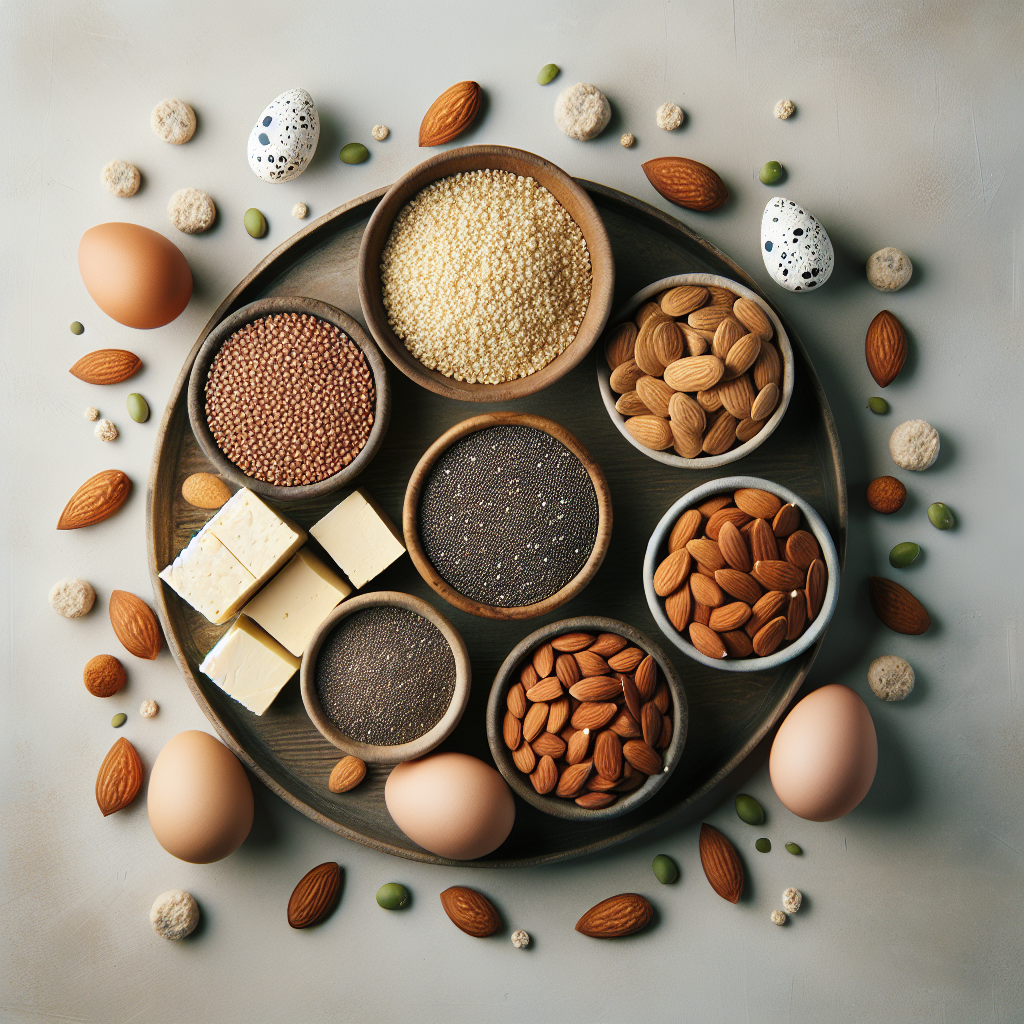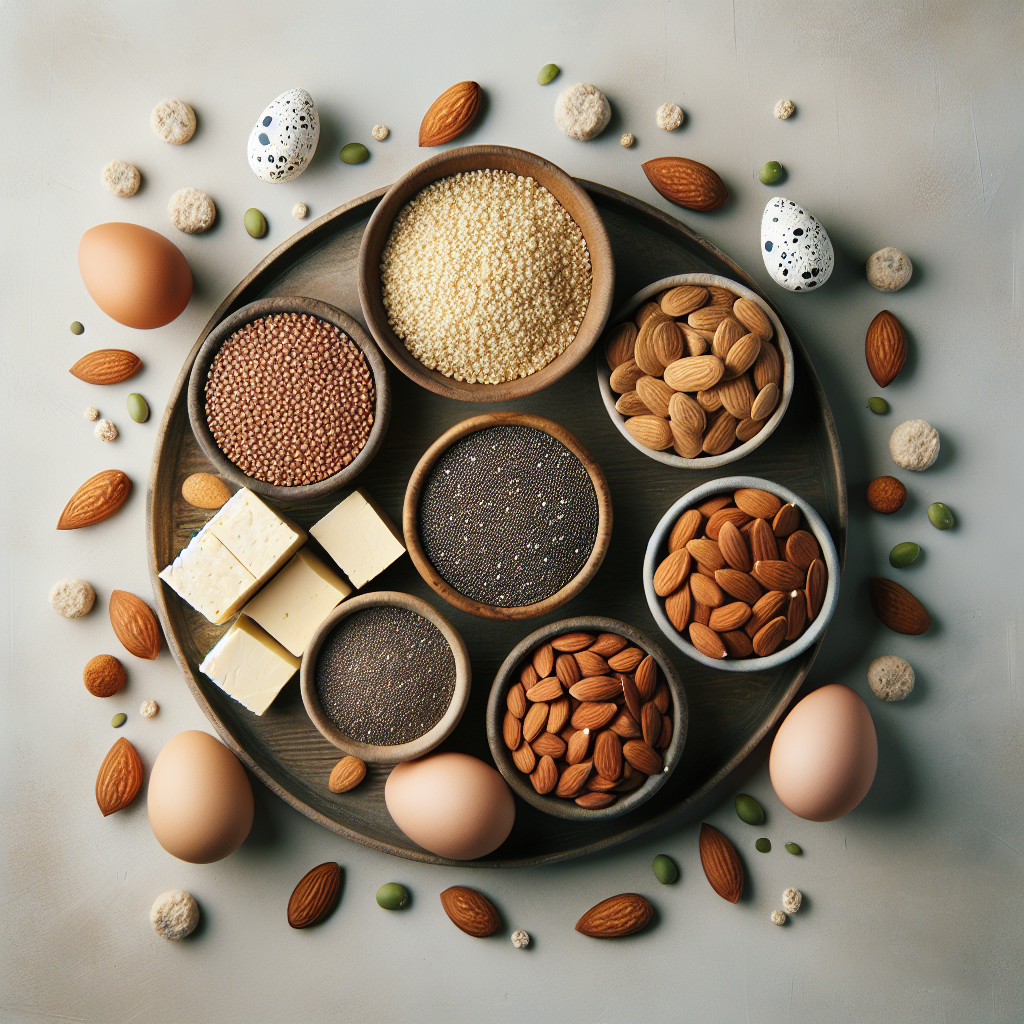Stepping into the world of alternative protein sources can be a game-changer, especially if you’re avoiding lectins. The availability of diverse, lectin-free proteins might surprise you. This article will guide you through various such options. It aims to assist you in understanding which foods fill the protein void without including lectins. From plant-based options to animal proteins, there’s a whole smorgasboard of choices for your dietary needs.
Alternative Protein Sources for Those Avoiding Lectins
Today, we’re going to dive into a topic that’s been creating quite a buzz in the health and wellness arena. The focus here is on alternative protein sources that are suitable for those who are looking to avoid lectins.
Understanding Lectins and Their Impact on Health
What are Lectins?
Let’s start from the basics. What exactly are lectins? In the simplest terms, lectins are proteins found in a broad range of plants and animal foods. They have a special affinity for carbohydrates, hence they tend to bind to the cells in the gut, skin, joints, and so on.
Potential Health Concerns Associated with Lectins
You may be wondering, “Why should I avoid lectins?” Well, some researchers believe that lectins may cause inflammation, damage the gut lining, and interfere with nutrient absorption. But, it’s important to note that not all lectins are harmful and most are destroyed by cooking.
The Role of Lectins in Digestive Disorders
Delving a bit deeper into the health territory, some claim that lectins can trigger adverse digestive reactions. This includes issues like bloating, diarrhea, nausea, and other gut discomforts.
Other Effects of Lectins on the Body
Beyond the gut, these sneaky proteins may also impact other aspects of your health. They may disrupt hormonal balance and immune function and some people may experience joint pain and skin issues attesting to lectins.
Importance of Avoiding Lectins for Certain Individuals
Keep in mind, everyone is unique. While some people may tolerate lectins quite well, others may be particularly susceptible. Those with autoimmune conditions, digestive disorders, or severe food intolerance might benefit from a low-lectin or lectin-free diet.
The Popular Lectin-Free Diet
Definition and Principles of the Lectin-Free Diet
Now, what’s all this talk about a lectin-free diet? Basically, this diet involves eliminating or reducing foods that are high in lectins. It often emphasizes consuming fresh vegetables, grass-fed meats, and olive oil.
Foods to Avoid on a Lectin-Free Diet
What foods should you be avoiding? This diet typically restricts grains, legumes, nightshade vegetables, dairy, and certain seeds and nuts.
Benefits and Drawbacks of the Lectin-Free Diet
There are two sides to every coin. On the plus side, going lectin-free may alleviate digestive complaints, boost energy levels, and help with weight loss. On the down side, it can be restrictive, making meal planning a bit of a challenge.
Does a Lectin-Free Diet Have Scientific Support?
The research is still evolving. Some studies report some benefits, but more high-quality, human trials are needed to fully understand the exact relationship between lectins and health.
Challenges with the Lectin-Free Diet
Nutrient Deficiencies and Imbalances
A major obstacle here stems from the potential risk of nutrient deficiencies. Cutting out entire food groups means you’re missing out on essential nutrients they provide.
Limited Food Choices
It’s a truth universally acknowledged that restricted diets limit food choices. Navigating restaurants and social gatherings can be a bit of a minefield.
Meal Planning and Preparation
Getting organized with meal planning and preparation takes on new importance when you’re trying to avoid certain foods.
Expense and Availability
Eating fresh, organic produce and grass-fed meats can come with a hefty price tag. Plus, availability can be constrained depending on your local area.
Sustainability Considerations
It’s also worth considering the sustainability aspect of the diet. For instance, reliance on meat and dairy might foster environmental concerns.

Exploring Other Plant-Based Protein Sources
Why Seek Alternative Protein Sources?
You might need to look for alternative protein sources if your usual go-tos are now on the avoidance list. This is to ensure your protein intake remains balanced, which is essential for optimal health.
Considerations for Lectin-Free Protein Sources
The key here is to find protein-rich foods that have low or no lectin content. Plus, these choices should be nutritious, tasty, and easy to incorporate into your meals.
1. Quinoa
Health Benefits of Quinoa
Quinoa is a superfood that wears many hats. It’s an excellent source of protein, fiber and is also packed with minerals and B-vitamins.
Nutritional Profile
Among the most impressive quinoa traits is its high protein content. It’s a complete protein, meaning it contains all nine essential amino acids. Plus, it is low in lectins.
Cooking and Incorporating Quinoa in Recipes
Cooking quinoa is a breeze. Plus, its mild flavor makes it versatile. Add it to salads, stir-fries, or use in place of rice.
Possible Allergic Reactions and Precautions
Some people may develop an allergic reaction to quinoa. If you have a sensitivity or allergy to other seeds, it’s best to introduce quinoa into your diet slowly.
2. Buckwheat
Health Benefits of Buckwheat
Buckwheat is a fantastic source of plant-based protein that is also rich in fiber, minerals, and antioxidants.
Nutritional Profile
It packs a solid protein punch and is gluten-free, making it a great choice for those with gluten sensitivities.
Cooking and Incorporating Buckwheat in Recipes
Buckwheat works well in savory dishes and salads. And, buckwheat flour can be used in baking all sorts of gluten-free goodies.
Potential Cross-Contamination and Gluten Concerns
While buckwheat is naturally gluten-free, cross-contamination can occur during processing. So, always look for certified gluten-free products.
3. Hemp Seeds
Health Benefits of Hemp Seeds
Hemp seeds bring a whole lot to the table. They are a complete protein, full of healthy fats, and they come with a generous dose of fiber.
Nutritional Profile
In addition to their impressive protein content, hemp seeds also contain omega fatty acids, which are good for heart health.
Using Hemp Seeds as a Protein Source
Thanks to their nutty flavor, they are delicious in salads, smoothies, and even as a yogurt topping.
Considerations for Hemp Protein Powder
You might also consider hemp protein powder if you’re whipping up protein-packed shakes. Just make sure there are no added sugars or unnecessary fillers.

4. Chia Seeds
Health Benefits of Chia Seeds
Don’t let their small size fool you. Chia seeds are a nutritional powerhouse. They’re loaded with protein, fiber, and are an excellent source of Omega-3 fatty acids.
Nutritional Profile
Chia seeds contain a high amount of protein for their size. They’re also rich in calcium, phosphorus, and antioxidants.
Incorporating Chia Seeds in the Diet
Chia seeds can be sprinkled on cereals, yogurts, or mixed into smoothies. Chia seed pudding is also a delicious and filling option.
Precautions when Consuming Chia Seeds
Just remember, they absorb liquid and expand in your stomach. So, start with small amounts and make sure to drink plenty of water.
5. Spirulina
Spirulina is a type of blue-green algae that’s chock-full of nutrients. It’s extremely high in protein and also contains antioxidants, B-vitamins, and other nutrients.
Consider adding spirulina powder to shakes and smoothies or take it as a supplement. However, it has a strong taste that some people may find unpleasant.
6. Pea Protein
Pea Protein is popular in the world of protein powders. It’s usually well tolerated, easily digestible, and has a smooth texture.
It’s great in smoothies or shakes, and can also be incorporated into baked goods. However, keep an eye on the ingredient list to avoid unnecessary additives.
7. Lentils
Great news for lentil lovers—you can have this powerhouse legume on a lectin-free diet! Lentils are high in protein and fiber, which can help keep you feeling satisfied.
Just make sure to cook your lentils well, which helps reduce their lectin content.
8. Edamame
Edamame are young, green soybeans. They’re a great source of plant-based protein and fiber. And while soybeans do contain lectins, these levels significantly decrease with cooking.
They make for a great snack on their own, or you can add them to salads and stir-fries.
9. Tempeh
Tempeh is a traditional Indonesian food made from fermented soybeans. The fermentation process reduces its lectin content, making it a good option for a lectin-free diet.
Moreover, tempeh is a good source of protein and is rich in prebiotics, which promote gut health.
10. Seitan
Seitan is a popular meat substitute that’s high in protein. It’s made from gluten, the main protein in wheat, which does not contain lectins.
However, if you have a gluten intolerance or celiac disease, seitan should be avoided.
Conclusion
Summary of Alternative Protein Sources for Lectin Avoidance
Just because you’re steering clear of lectins doesn’t mean you’re confined to a life of boring meals. With choices like quinoa, buckwheat, hemp seeds, chia seeds, spirulina, pea protein, lentils, edamame, tempeh, and seitan at your disposal, there’s a world of easy-to-prepare, delicious, and nutrient-packed meals waiting for you.
Personalization and Consulting Healthcare Professionals
Remember, it’s crucial to personalize your diet based on your individual needs and health status. Always consult your healthcare professional before making any major changes to your diet.
Balancing Nutrient Intake and Varied Food Sources
It’s essential to balance your nutrient intake and ensure you’re not missing out on important vitamins and minerals. Strive for a variety of food sources to add a mix of nutrients to your diet.
Adopting a Sustainable and Realistic Approach
Finally, aim for practicality. Adopt a sustainable and realistic approach that ensures your diet fits your lifestyle. Remember, taking good care of your health should enhance your life, not complicate it. Happy explorations in the kitchen!
